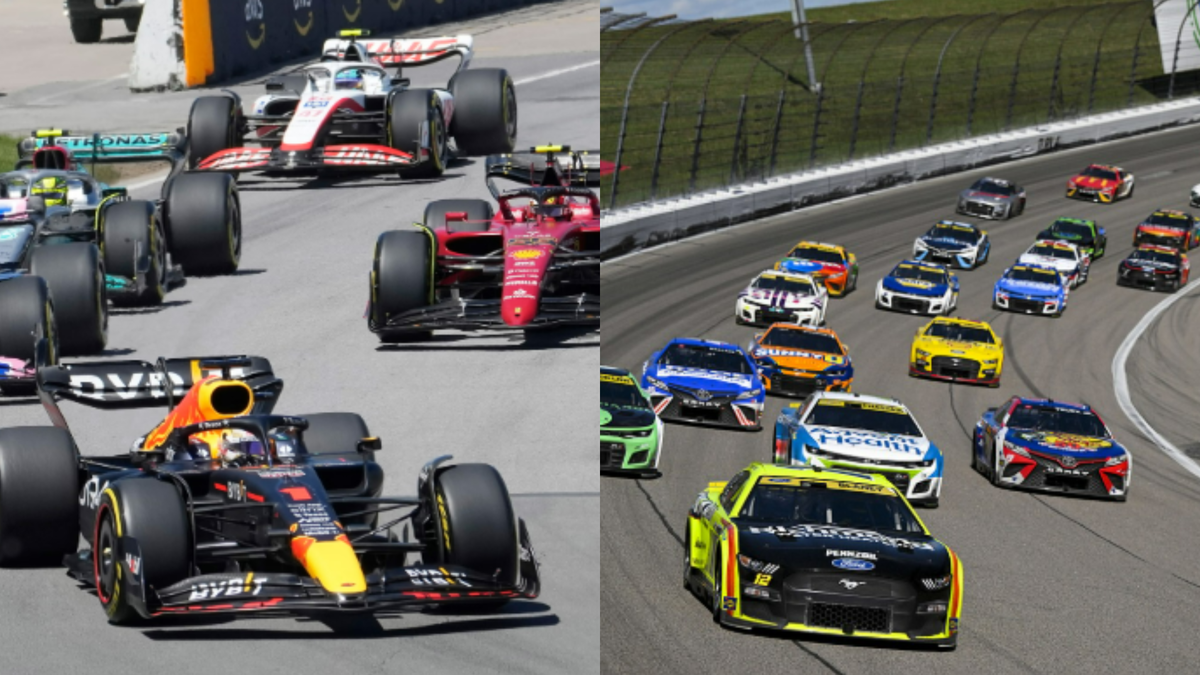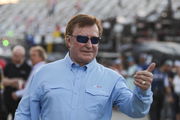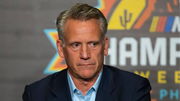

The year was 2005. Jeff Gordon was still a weekly threat. Dale Earnhardt Jr. had become the face of a booming sport after the horrifying death of Dale Earnhardt Sr. in 2001, and Jimmie Johnson was chasing his prime. Races were selling out, sponsors were lining up, and the energy around NASCAR was extremely electric. With big-ticket brand partnerships, marketing, and a bold push into new markets, NASCAR was no longer just a southern phenomenon—it was a national machine humming at full speed.
Watch What’s Trending Now!
While growth seemed unstoppable, the cracks were already forming. By the end of the decade, Jimmie Johnson had five consecutive championships, and the new fans left almost as fast as they arrived. TV ratings dipped, and empty seats quietly replaced sold-out grandstands. This aggressive expansion could not outpace the sport’s inability to hold onto what made it unique. The fall wasn’t loud; it was gradual and unnerving.
Today, many longtime fans are watching Formula One with a growing sense of déjà vu. With a big-money Disney partnership, a Hollywood movie starring Brad Pitt, and American brands suddenly swarming the sport, F1 feels like it’s in its NASCAR 2005 phase. That flash, money, and marketing muscle—but also murmurs of concern. For every new brand deal, there’s a fan wondering: Who is this really for?
ADVERTISEMENT
Flash before crash
In the early 2000s, NASCAR exploded. With Jimmie Johnson beginning his reign, television deals with FOX and NBC drawing millions, and attendance numbers averaging nearly 200,000, it felt like nothing could bring the sport down. Corporate America brought in its full force–Pepsi, Budweiser, Home Depot, and Lowe’s turned stock cars into 200 MPH billboards. The 2002 season saw NBC drawing 35 million viewers for the Daytona 500.
This made it the most-watched race since the 1984 running of the Indianapolis 500. By 2003, Street and Smith’s sports business journal ranked NASCAR first in sponsor satisfaction, tied only with golf. It was a time when a driver’s fan base did not just cheer—they purchased. But then it all came crashing down after 2007. Now, fast forward two decades, and it seems like F1 is walking the same path. American sponsors are flooding in. Disney just announced a massive new content deal. Brad Pitt’s Formula One movie, produced with help from the seven-time world champion, Lewis Hamilton, and set to debut in theaters worldwide, is being hyped as a cinematic game-changer.
ADVERTISEMENT
F1’s growth seems to be rapid, and the sport’s growth in the US has been heavily fueled by Netflix’s Drive to Survive. A thrilling look behind the scenes that turned casual viewers into overnight super fans. But some wonder whether the sport can hold the audience once the storylines run thin and the on-track product struggles to live up to the hype. For longtime fans, the sudden boom isn’t just exciting—it’s familiar. Perhaps a little too familiar.
NASCAR veteran insider Jeff Gluck on X did not mince his words. It wasn’t a direct criticism, but it wasn’t a compliment either. He wrote on X, “Between the Disney partnership announcement, the new F1 movie, and now this, I keep getting NASCAR 2000s bubble,” coming from someone who chronicles NASCAR’s rise and dip, it reads like a siren warning.
ADVERTISEMENT
Between the Disney partnership announcement, the new F1 movie and now this, I keep getting NASCAR 2000s bubble vibes. https://t.co/dBcsGODZLh
— Jeff Gluck (@jeff_gluck) May 27, 2025
The NASCAR bubble did not burst in one dramatic moment, it leaked slowly. First, it was the flattening TV ratings. Then empty seats at new urban tracks, followed by the sense that the new fans weren’t sticking around. By the time many realized it, the golden era was already fading. Jimmie Johnson kept winning, yes, but the storylines weren’t carrying like they used to. The playoff format introduced in 2014 was an attempt to revive a sport that had reached a point of stagnation. And while initially it received glorious reviews, in hindsight, it has only worked against the sport, with the most deserving driver rarely being crowned as the winner.
F1’s rise in the US—fueled more by Drive to Survive than by edge-of-your-seat racing – is starting to feel oddly performative. The glitz is definitely undeniable, but so is the growing chatter from fans who have seen this before. And this time, it’s their port on the line. Because of the Disney deal and the Brad Pitt movie, mark the peak of the F1 American moment. The question fans are now asking—often with a smirk, sometimes with concern—is, what comes after the high?
ADVERTISEMENT
Top Stories
Dale Jr. Warns of Deeper Issues as Joe Gibbs Parts Ways With Decade-Long Executive

Chase Elliott’s Popularity Hits New Low as Dale Jr.’s Daytona 500 Return Triggers Record-Breaking Sale

Richard Childress & Johnny Morris Make Patriotic Power Moves Days After Causing NASCAR’s Collapse in Courtroom

Richard Childress’ Grandson to Be the ‘First Casualty’ of RCR-Kaulig Racing Divorce, Claims Dale Jr.

NASCAR Distances Themselves From Commissioner Steve Phelps After Public Embarrassment Claims Insider

Fans share their thoughts on F1’s mirroring trajectory
At first, it was just a feeling. Flicker of déjà vu in group chats. Then someone finally boldly wrote on X: “Haven’t I repeatedly said in the various group chats and texts that it’s felt like F1 is mirroring early 2000s NASCAR before the bubble popped?” This comment was from none other than the renowned motorsports journalist, Seth Eggert. That comment did not spark debate—it confirmed a suspicion already simmering. Because of too many fans, this current phase of F1 American expansion doesn’t feel like growth. It feels like 2006 all over again. One fan summed it up perfectly: “What’s interesting is all of these brands are hopping on at the end of the bubble. I see this as 2006 NASCAR, where 2008/10 was the starting fall.”
That’s the kind of perspective only time and scars can give you. And now, watching F1 flood American screens with slick promos and Hollywood tie-ins, many longtime motorsport followers aren’t really celebrating. They are bracing themselves. Because this isn’t the first time a racing series mistook marketing buzz for staying power. The most biting observation of all isn’t just that F1 is booming, but focuses on why.
ADVERTISEMENT
One fan nailed the irony, writing, “What’s amazing is it’s a bubble that formed on the heels not of an on-track product, but a Netflix documentary. It’s fun to watch people start watching F1 only to wonder where all the drama is when the green flag drops. Reminds me of the wrestling episode of South Park.” The comparison stings because it lands. Beneath the surface-level drama, the racing product hasn’t always delivered. And the fans know it.
Still, the question is not whether F1 is peaking—it’s whether it knows it is. Or if, like NASCAR, it’s too enchanted by its own momentum to pull back. That tension led one fan to posit a new viral thought: “Who’s going to fly too close to the sun first: F1 or SEC Football?” The fact that there isn’t even a debate says everything. Because this isn’t just about whether the F1 will crash—it’s about whether it can learn from the history it may be repeating. The fans remember. And this time, they’re not just watching with blind hope. They’re watching with receipts.
Do you think F1 is going down NASCAR’s path? Let us know in the comments!
ADVERTISEMENT
ADVERTISEMENT
ADVERTISEMENT
ADVERTISEMENT

